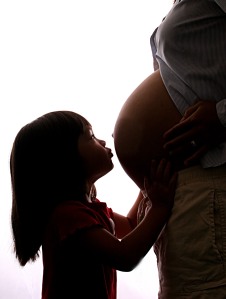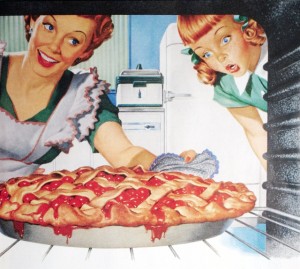 In my novel MOTHER MONA, my main character Mona travels to remote Alaska to help her daughter who is hospitalized with preeclampsia.
In my novel MOTHER MONA, my main character Mona travels to remote Alaska to help her daughter who is hospitalized with preeclampsia.
What the heck is preeclampsia? A lot of people have never heard of it. Neither had I, until I had it.
The first time I had preeclampsia, I thought the swelling in my legs and face and the headaches were just a normal part of pregnancy. Thankfully, my doctor thought otherwise and put me on strict monitoring and bedrest. A few days later, my daughter was born.
The second time – being seen at the hospital on base this time – I showed up for an appointment and my blood pressure was 250 over 210. Yeah, you could say that’s high. Because of a mistake on the appointment calendar, the front desk people almost wouldn’t let me be seen. Fortunately an on-the-ball nurse saw the state I was in, and my baby was delivered by c-section that afternoon.
The third time I had preeclampsia (back to a civilian provider) I ended up on strict bedrest for three months (with four young kids. Yeah.). At 34 weeks into the pregnancy, things started going downhill. My baby still wasn’t due for another month. Initial test showed I had protein in my urine and I looked like the Michelin Man, but my doctor wasn’t too concerned. However I had a feeling of complete dread – headaches, dizziness, I *knew* something was horribly wrong. My doctor knew about preeclampsia, but in my opinion didn’t fully appreciate how deadly it was. At 36 weeks I was back in her office, in tears, begging her to do something. To humor me, she re-did the tests. She called a few hours later. I was scheduled for a c-section the next Monday. When I showed up at the hospital, they re-did the tests again. I was worse. My doctor said, “(Bleep bleep), get her on the mag sulfate and in the OR now!”
I am incredibly fortunate blessed. At 36 weeks my baby was born healthy, his lungs fully developed. It was determined that I had severe preeclampsia and also had acquired HELLP Syndrome, a complication of preeclampsia that attacks the liver. Having the baby is the only cure for preeclampsia (although it can also attack after delivery), and within a few days my blood pressure had dropped to the point I was no longer in imminent danger. Yet, it took months for my body to return to normal. Five years later, I still have residual liver and kidney problems. I am just thankful to be alive.
When I was sitting around on bedrest for those three months, I came across a group called the Preeclampsia Foundation. Literally, they saved my life. Talking to their experts, and the encouragement and support from other women on the forums, gave me the confidence to insist the tests be repeated. If I hadn’t had that encouragement, if I had waited another few days, I could have lost my baby or even died.
The takeaway is this: sometimes doctors and nurses are up to speed on the symptoms and complications of preeclampsia – sometimes they’re not. It is up to every woman to learn for herself what the danger signs are, and to stand up for herself if the health care system isn’t listening. This holds true, I suppose, in all situations, but with preeclampsia, often the mother just knows something is wrong. That feeling of impending doom that had me questioning my own sanity? A major sign preeclampsia is getting critical. During my pregnancy, the the preeclampsia Foundation forums I got to know a lot of women all across the country who had preeclampsia. Some of the friends I made lost their babies. One of my friends had to deliver at 26 weeks, and I watched with tears for updates on the forums every day. Happily, her baby survived – a miracle if ever there was one. But there is a section of the forums dedicated to moms and babies who were not so fortunate. The testimonies of surviving children, spouses and parents will rip you heart out. Especially because so often, their loved ones’ deaths could have been prevented by a better understanding of this disease.
The Preeclampsia Foundation reports that “by conservative estimates, these disorders are responsible for 76,000 maternal and 500,000 infant deaths each year” around the world. And that’s not just in underdeveloped countries. Preeclampsia affects 5-8 percent of all pregnancies. Doctors don’t know what causes it, although they have identified a few risk factors. The point is, it is unpredictable. It usually starts after the 20th week of pregnancy. But not always. Know the symptoms:
- No Symptoms (surprise! yeah, that’s why this disease is so evil. You can have it and not even know)
- Hypertension – high blood pressure
- Proteinuria – protein in your urine. That little stick you dip every prenatal visit? This is why.
- Edema (Swelling) – beyond the usual swollen feet. I gained 70 pound of water with my first.
- Sudden Weight Gain – again, beyond the obvious
- Nausea or Vomiting
- Abdominal (stomach area) and/or Shoulder Pain
- Lower back pain
- Headache (worst headache of your life? Go to the ER immediately. I mean now.)
- Changes in Vision
- Hyperreflexia – overactive or over-responsive reflexes
- Last but not least, my personal “favorites:” Racing pulse, mental confusion, heightened sense of anxiety, shortness of breath or chest pain, sense of impending doom
The Preeclampsia Foundation is an incredible resource. Check them out. And while you’re there, please donate a little something in honor of Preeclampsia Awareness Month. And in honor of all those who didn’t make it through.
